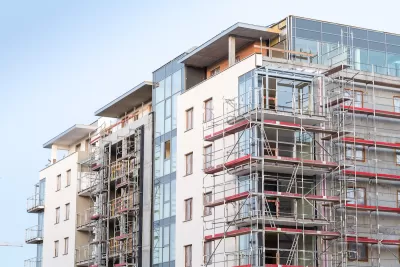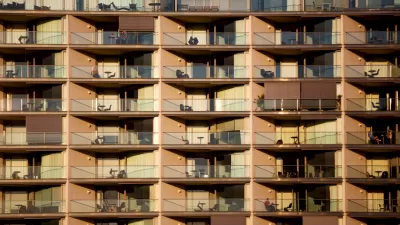High insurance costs are calling some organizations’ future into question as supportive housing providers struggle to meet their expenses.

Organizations that operate permanent supportive housing are faced with a steep rise in insurance rates, causing many of them to question their financial future and their ability to develop more housing and provide services for their residents.
As Robert Davis explains in Next City, “These issues have become especially pressing in states like California, Colorado, Louisiana and Florida, where insurance costs have risen significantly due to the increased risk of climate-related disasters.” Since 2019, the nation has lost over 21,000 permanent supportive housing units, while the unhoused population grew by over 200,000 people in the same period.
“Lindsay Brugger, vice president of urban resilience at the Urban Land Institute, tells Next City that many of the issues PSH providers face are emblematic of the broader issues within the insurance industry itself. Insurers are writing fewer policies in climate-disaster-prone areas, and reinsurance companies (firms that reimburse insurance companies) are also providing fewer reimbursements.” Permanent supportive housing providers are barred from passing on insurance costs to their tenants and often operate on very low margins of profit.
Now, federal assistance programs such as HUD’s Green and Resilient Retrofit Program and FEMA retrofitting grants could be discontinued under the new administration’s plan to cut government spending.
FULL STORY: Rising Insurance Costs Pose an Existential Risk for Permanent Supportive Housing

Maui's Vacation Rental Debate Turns Ugly
Verbal attacks, misinformation campaigns and fistfights plague a high-stakes debate to convert thousands of vacation rentals into long-term housing.

Planetizen Federal Action Tracker
A weekly monitor of how Trump’s orders and actions are impacting planners and planning in America.

In Urban Planning, AI Prompting Could be the New Design Thinking
Creativity has long been key to great urban design. What if we see AI as our new creative partner?

San Francisco Mayor Backtracks on Homelessness Goal
Mayor Dan Lurie ran on a promise to build 1,500 additional shelter beds in the city, complete with supportive services. Now, his office says they are “shifting strategy” to focus on prevention and mental health treatment.

How Trump's HUD Budget Proposal Would Harm Homelessness Response
Experts say the change to the HUD budget would make it more difficult to identify people who are homeless and connect them with services, and to prevent homelessness.

The Vast Potential of the Right-of-Way
One writer argues that the space between two building faces is the most important element of the built environment.
Urban Design for Planners 1: Software Tools
This six-course series explores essential urban design concepts using open source software and equips planners with the tools they need to participate fully in the urban design process.
Planning for Universal Design
Learn the tools for implementing Universal Design in planning regulations.
Gallatin County Department of Planning & Community Development
Heyer Gruel & Associates PA
JM Goldson LLC
Mpact (founded as Rail~Volution)
City of Camden Redevelopment Agency
City of Astoria
Jefferson Parish Government
Camden Redevelopment Agency
City of Claremont





























